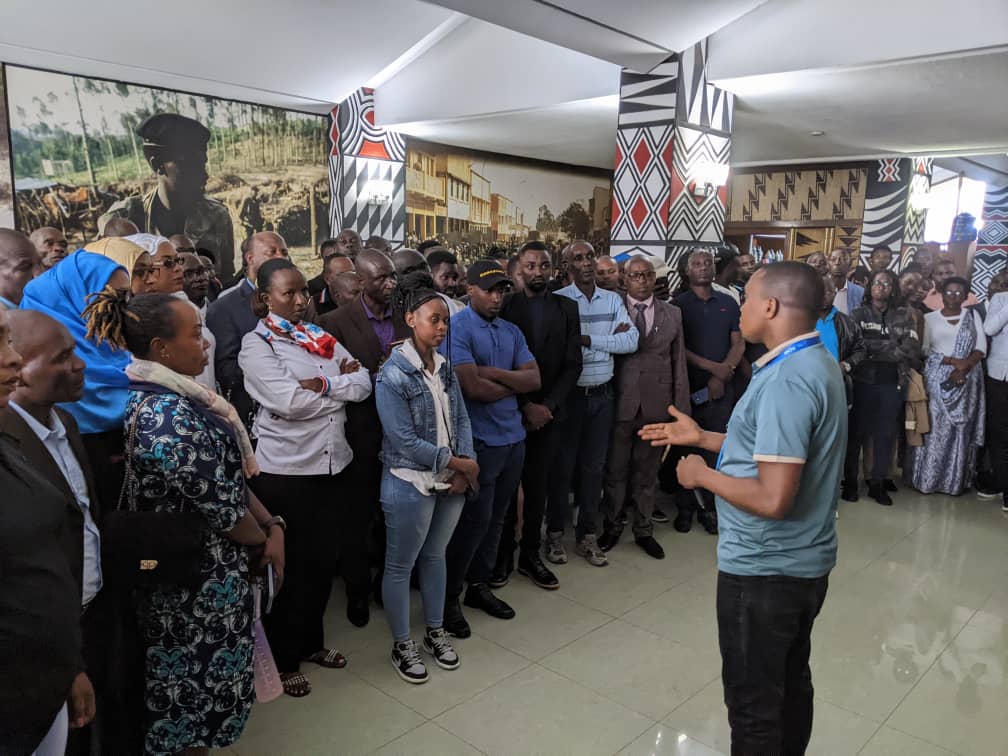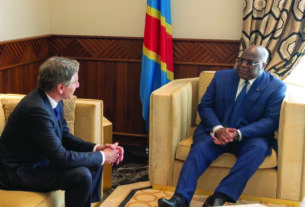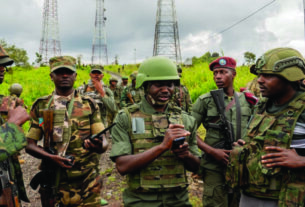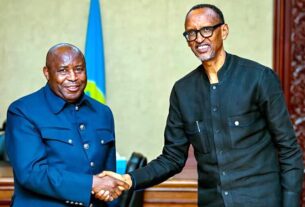The people of Mpenge Cell, Muhoza Sector in Musanze District, after visiting the Museum of the Struggle to Stop the Genocide against the Tutsis and being told a lot, they left a lesson about the unity and integrity of Rwandans.
On Friday, December 22, 2023, when they visited this House located at the place where the Parliament works in Kimihurura in the city of Kigali, 150 residents represented others in categories including youth, adults, members of the private sector and government agencies and those from In the RPF-Inkotanyi group, the representatives of religions and churches in the Mpenge cell, explained the history of how the genocide was carried out and how the Commander-in-Chief of the RPF-Inkotanyi, Paul Kagame, gave an order to those forces, to make it possible to stop and save the Tutsis who were killed by chasing the enemy.
Understanding the history of the Struggle to stop the Genocide against the Tutsis, is said to be important in the ongoing journey of these people to build unity and preserve the integrity of Rwandans.
Noheli Emmanuel said “We are in a safe and free country. When we were told the history of this House, we found out that the good things we have achieved are those who participated in it, the RPF Inkotanyi forces who fought a difficult battle to stop the Genocide. The lesson that leaves us as a people is to leave these good achievements behind. we strive to prevent evil from its origin”.
Ishime Arsene said, “We were told how the RPF-Inkotanyi forces faced the government forces that planned and carried out the Genocide against the Tutsis. The way they showed courage and not giving up in the fight to stop the Genocide I found to be a great lesson that we should learn as young people, and strengthen ourselves in our daily lives to accompany us in the journey we are in to build the country and leave behind our achievements”.
Among the measures that the visitors of this House have taken is to educate those who are confused and those who have attitudes and mindsets based on ethnicity, so that they can change their attitudes and learn more about the real history of Rwanda and the steps it has taken to achieve unity.
Eric Nkurayija, the President of the Council of Muhoza Sector, from the history they described and looked at it themselves, he finds that sharing it with others is the best way to leave a culture of dedication and rejecting evil.
He said, “We were told how when the Genocide against the Tutsis began to be implemented, the RPF Inkotanyi forces, which did not exceed 600, started the fight to stop it, trying to defend themselves, with great dedication, protecting the politicians of the RPF-Inkotanyi and taking the first step with the support of their colleagues to stop the Genocide. so it was not easy at all but they succeeded. It is a great lesson that we should learn from, that love of the country and dedication wherever we are and we show it in what we do, and together we will be able to fight for the development of our country.”
The Genocide Stopping History Museum consists of three main parts that are represented in the form of photos on the walls and videos in 11 rooms; which shows the important step taken by the RPF forces in stopping the Genocide and seeking a peaceful country.




